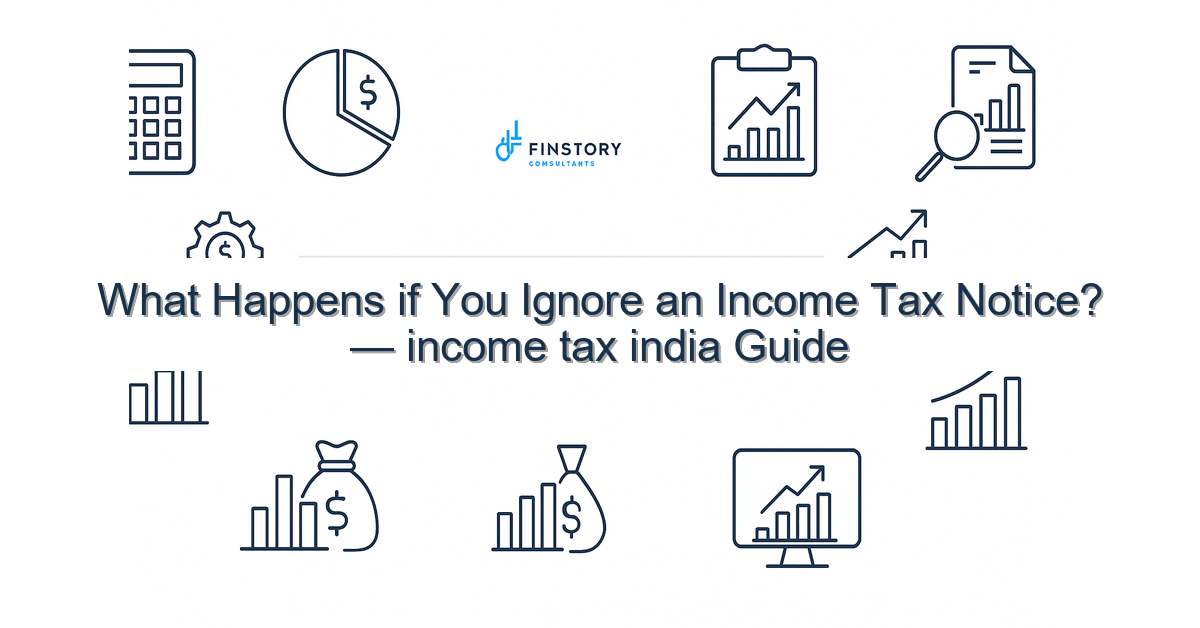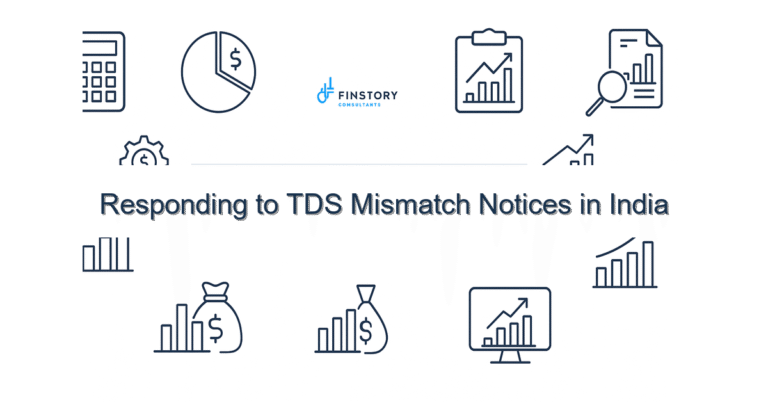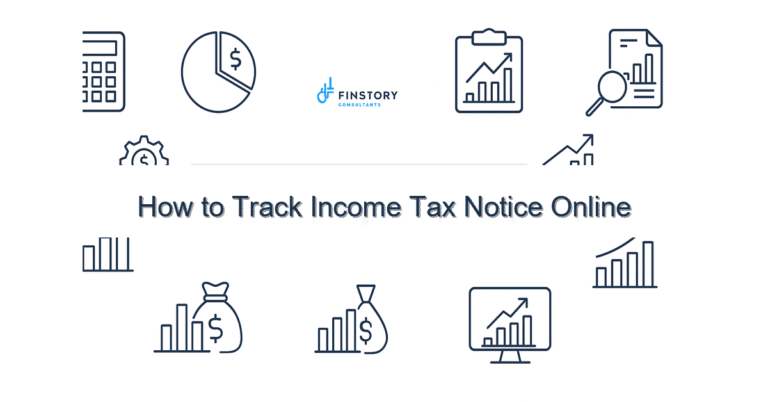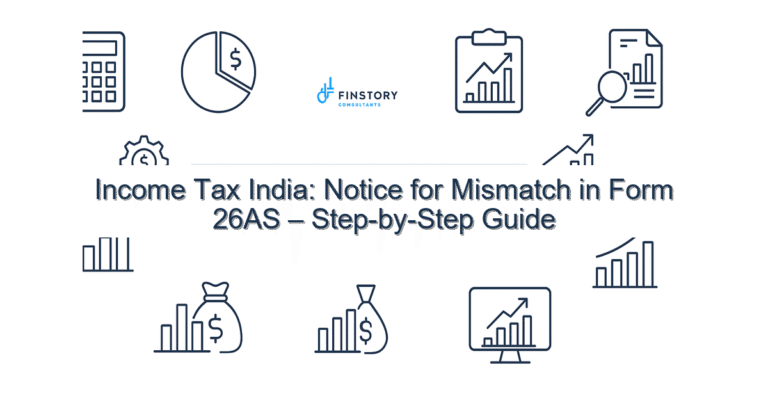What Happens if You Ignore an Income Tax Notice?
Getting an income tax notice feels stressful — whether you’re a salaried employee, a freelancer, a founder or run an MSME. You’re not alone: many taxpayers in India see a notice and freeze. The good news is most notices are resolvable if you act quickly.
Summary: A notice is often a mismatch or a missing document flagged against your PAN or return; ignoring it can increase tax, interest and penalties and even trigger assessment proceedings. Respond within the CBDT timelines, reconcile AIS/26AS and TDS/TCS, and get expert help when required to minimise cost and risk.
What’s the real problem in India?
Tax administration relies on third‑party reporting: employers, banks, brokers and others report data that the Income Tax Department matches against your ITR. If there’s a mismatch (TDS/TCS not reflected in AIS/26AS, unreported capital gains, or differing income figures), the system issues a notice — commonly under sections like 143(1), 142(1) or 139(9). CBDT timelines require a timely response; missing them can convert a simple correction into a demand or assessment for the AY (Assessment Year) corresponding to the PY (Previous Year).
- Symptoms: a notice about unexplained income, mismatch in TDS/TCS vs AIS/26AS, or a demand for unpaid tax and interest.
- Symptoms: unexpected query about capital gains where indexation wasn’t applied or sale consideration differs from broker reporting.
- Symptoms: notice after the ITR filing last date, or when Form 16/Form 16A entries weren’t reconciled with AIS/26AS.
What people get wrong
- Assuming it’s a scam: many genuine notices come from the official income tax India portal — check the e‑Filing dashboard and notice details before deciding.
- Panicking and paying immediately: paying without validating the demand can be costly; sometimes the demand arises from a reporting error by a bank or employer.
- Thinking filing another ITR will fix it: filing a fresh return after the ITR filing last date or ignoring the notice won’t withdraw a pending notice issued under section 143(2) or 142(1).
- Overlooking related issues: ignoring mismatches in AIS/26AS, missed TDS/TCS entries, or capital gains indexation mistakes that could have been corrected with documents.
A better approach
Use a simple 4‑step framework to respond effectively:
- 1) Verify & prioritise: Confirm notice authenticity on the Income Tax e‑Filing portal, note the cited section and the response deadline (CBDT timelines are strict).
- 2) Reconcile data: Pull AIS/26AS, Form 16/16A, bank statements, broker contract notes and compute differences (TDS/TCS, unreported interest, capital gains indexation issues).
- 3) Respond with evidence: Prepare a clear response attaching reconciliations, corrected figures or a rectification application; if you’ve missed the ITR filing last date, check options like belated return or revised return depending on the notice type.
- 4) Escalate appropriately: If the notice demands tax you dispute, file a stay/deposit appropriate amount and consult a tax professional to avoid penalties or prosecution.
Short example: A small software founder ignored a mismatch showing high TDS on a contract of ₹2.2 lakh. By pulling AIS/26AS and bank remittances and responding within 30 days, the demand was corrected to ₹12,000 of tax due — far less than the potential penalties and interest that would have accrued.
Quick implementation checklist
- Check notice authenticity and note the section and deadline on the e‑Filing portal.
- Download AIS/26AS and compare with Form 16/Form 16A and bank/broker statements.
- Verify capital gains calculations and apply capital gains indexation where eligible.
- Confirm the ITR filing last date history for the relevant AY; consider belated or revised ITR if appropriate.
- Collect supporting documents: invoices, contracts, bank credits, broker contract notes, TDS certificates.
- Draft a concise response or submit a rectification on the portal; keep copies of all uploads and acknowledgements.
- If demand is disputed, consult an expert and consider deposit/stay options to prevent recovery action.
- Track follow‑up dates and set reminders for any hearings or submissions.
What success looks like
- Notice closed with no additional tax demand after reconciliation.
- Significantly reduced demand after submitting supporting evidence or rectification.
- Waiver or reduction of penalties (late fee, interest) through timely response or bona fide explanation.
- Updated AIS/26AS and corrected TDS/TCS records to avoid future notices.
- Ability to get bank loans or investments without tax‑related encumbrances on PAN.
Risks & how to manage them
Risk: Escalation to assessment or penalty. Manage: Respond within timelines, file rectification or revised returns as applicable, and seek expert help if the department raises serious allegations. Risk: Wrongful payment or admission. Manage: Don’t pay blindly; validate with documents. Risk: Repeated notices caused by systemic reporting errors. Manage: Coordinate with your employer, bank or broker to correct future filings and reconcile AIS/26AS periodically.
Tools & data
- Income Tax e‑Filing portal & notice download
- AIS/26AS and Form 16/Form 16A for TDS/TCS reconciliation
- Bank statements, broker contract notes, purchase/sale documents for capital gains indexation
- Accounting or billing software for MSMEs; Excel or reconciliation templates for freelancers
- [link:ITR guide] for filing, plus guidance on Section 80C limit and choosing new vs old regime slabs when recalculating tax
Next steps
If you’ve received a notice, don’t ignore it. Start by downloading AIS/26AS, comparing it with your Form 16/16A, and noting the notice deadline. If the situation feels complex — especially for disputed demands, capital gains issues or large TDS mismatches — get professional advice early. Finstory helps salaried taxpayers, professionals, founders and MSMEs respond to notices, file rectifications, and correct AIS/26AS mismatches so you can focus on your business.
Work with Finstory. Speak with an Expert for a personalised plan to reduce your tax outgo and stay compliant. Book a free 20‑min consultation.
📞 Need help with Income Tax in India?
Book a 20-min consultation with our tax team. Individuals, founders & MSMEs welcome.
Prefer email or phone? Write to info@finstory.net
or call +91 44-45811170.





